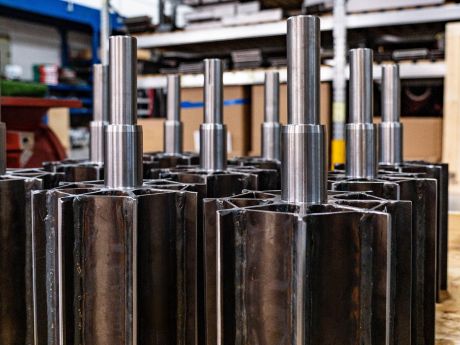
Choosing the right rotor is crucial when it comes to valves, gates, and airlocks. The selection process plays a vital role in ensuring optimal performance and efficiency of these equipment. In this article, we will highlight the importance of rotor selection and its impact on the overall operation.
The Role of Rotors in Valves, Gates, and Airlocks
Rotors are integral components of valves, gates, and airlocks, serving as the key mechanism for controlling the flow of bulk solids in industrial processes. They are responsible for regulating material movement, preventing leakage, and maintaining system integrity.
Factors Influencing Rotor Selection
Several factors come into play when selecting the appropriate rotor for a specific application. These factors include the type of material being handled, particle size, flow characteristics, temperature, and pressure conditions. Each of these parameters has a direct influence on the choice of rotor design and material.
Rotor Design Considerations
Different rotor designs are available to accommodate diverse material handling requirements. Factors such as the number and shape of rotor vanes, the clearance between rotor and housing, and the presence of seals or coatings need to be carefully evaluated. These design considerations impact the flow efficiency, durability, and resistance to wear of the rotor.
Material Compatibility
The compatibility between the rotor material and the handled substance is of utmost importance. Corrosion, abrasion, and erosion resistance are crucial aspects to consider. Various rotor materials such as stainless steel, cast iron, and polymer compounds offer different levels of resistance, allowing the selection of the most suitable option for a given application.
Performance and Efficiency
The right rotor selection significantly influences the performance and efficiency of valves, gates, and airlocks. Proper rotor design and material selection minimise system downtime, improve sealing integrity, enhance flow control, and reduce energy consumption. These factors translate into increased productivity and cost savings for industrial operations.
Maintenance and Longevity
Selecting the appropriate rotor not only impacts immediate performance but also affects long-term maintenance requirements and equipment longevity. Rotor designs that are easy to clean, inspect, and replace contribute to efficient maintenance practices, reducing overall operational costs and extending the lifespan of the equipment.
The significance of rotor selection in valves, gates, and airlocks cannot be overstated. Careful consideration of factors such as material compatibility, design features, and operational requirements is vital to ensure optimal performance, efficiency, and longevity. By choosing the right rotor, industrial processes can achieve seamless material flow control and maximise productivity while minimising downtime and maintenance costs.
Back to News